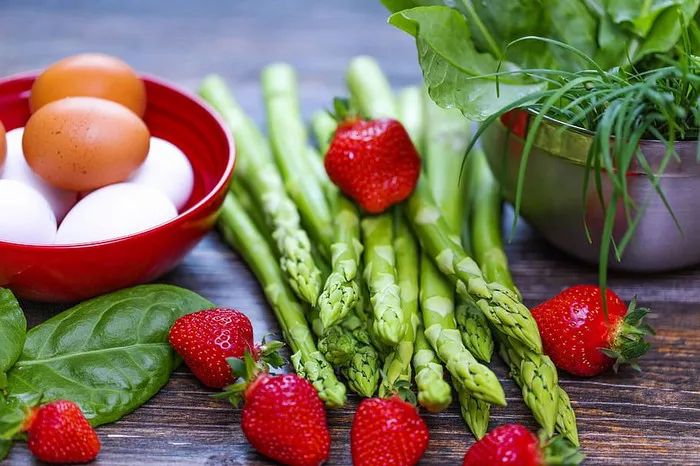Ordering Chinese food can seem like an adventure, especially if you’re not familiar with the cuisine or the menu. Whether you’re ordering from a restaurant, a takeout counter, or using a food delivery service, there are several things to consider to make the process smoother. This guide will break down everything you need to know about ordering Chinese food, from understanding the menu to choosing the right dishes and tips for the best experience.
Understanding the Chinese Food Menu
Chinese food menus can be overwhelming because they often include a variety of options. Here are the main categories you will usually find:
1. Appetizers
Appetizers are small, flavorful dishes that prepare your palate for the main course. Common options include:
Spring Rolls – Lightly fried rolls filled with vegetables and sometimes meat.
Dumplings – Soft dough wrappers filled with pork, chicken, or vegetables.
Crab Rangoon – Fried wontons stuffed with cream cheese and imitation crab.
Egg Rolls – Larger than spring rolls, often stuffed with meat, cabbage, and other vegetables.
2. Soups
Chinese soups can be a refreshing start to a meal. Some popular options include:
Hot and Sour Soup – A tangy and spicy soup with tofu, mushrooms, bamboo shoots, and vinegar.
Wonton Soup – A clear broth with dumplings filled with pork or shrimp.
Egg Drop Soup – A smooth, savory soup with beaten eggs swirled into hot broth.
3. Main Dishes
Main dishes are the heart of the meal and usually consist of meat or vegetables cooked in a flavorful sauce. Some common choices are:
Chicken, Beef, Pork, or Shrimp Dishes – These are often stir-fried with vegetables like broccoli, bell peppers, or snow peas.
Kung Pao Chicken – A spicy dish with chicken, peanuts, and vegetables.
General Tso’s Chicken – Crispy fried chicken in a sweet, tangy sauce.
Sweet and Sour Pork – Pork chunks coated in a sweet and tangy sauce with pineapple and vegetables.
Moo Shu Pork – A savory stir-fry served with thin pancakes to wrap the pork and vegetables.
4. Vegetable Dishes
Vegetable options are also widely available and can be great for vegetarians or anyone looking for a lighter option:
Bok Choy – A type of Chinese cabbage, often stir-fried.
Eggplant with Garlic Sauce – Soft eggplant cooked in a savory sauce with garlic.
Stir-Fried Mixed Vegetables – A mix of vegetables like carrots, snow peas, mushrooms, and bell peppers in a light sauce.
5. Rice and Noodles
Rice and noodles are essential side dishes that accompany the main courses. They help balance the flavors of the meal.
Fried Rice – Stir-fried rice with eggs, vegetables, and often a choice of meat.
Steamed Rice – Simple, fluffy rice often served with saucy dishes.
Chow Mein – Stir-fried noodles with vegetables and a choice of meat.
Lo Mein – Soft, egg noodles mixed with meat and vegetables in a savory sauce.
6. Specialty Dishes
Chinese restaurants may offer specialty dishes that aren’t commonly found in fast food chains. These dishes can be regional specialties or chef’s specials. Some to look out for include:
Peking Duck – A flavorful, crispy duck dish served with pancakes, hoisin sauce, and vegetables.
Szechuan Cuisine – Dishes from the Szechuan province, known for their bold, spicy flavors.
Dim Sum – A variety of small, bite-sized dishes traditionally served in steamer baskets, like dumplings, buns, and spring rolls.
Tips for Ordering Chinese Food
When ordering Chinese food, there are a few things to keep in mind to ensure you get the best experience.
1. Know Your Spice Tolerance
Some Chinese dishes can be very spicy, especially those from Szechuan or Hunan cuisines. If you’re not used to spicy food, ask the restaurant to make your dish mild. For example, if you’re ordering Kung Pao Chicken, you can ask for it to be less spicy.
2. Consider Family-Style Dining
Chinese meals are often served family-style, meaning you will order multiple dishes to share with everyone at the table. This allows you to try a variety of flavors and textures. Be sure to order a mix of meat, vegetables, and rice or noodles to balance the meal.
3. Use Delivery or Takeout Apps
If you prefer to order from the comfort of your home, many Chinese restaurants offer online ordering through food delivery apps like Grubhub, Uber Eats, or DoorDash. These apps make it easy to browse the menu, customize your order, and have it delivered straight to your door.
4. Look for Combo Meals
Many Chinese restaurants offer combo meals, where you can get a main dish, rice, and an appetizer for a fixed price. This is a good option if you’re ordering for yourself or a small group and want to save time and money.
5. Ask About Vegetarian or Vegan Options
Many Chinese restaurants offer vegetarian and vegan versions of their dishes. You can replace meat with tofu, vegetables, or mock meats made from soy protein. Popular vegetarian dishes include stir-fried vegetables, tofu with black bean sauce, and vegetable spring rolls.
How to Customize Your Order
One of the great things about Chinese food is that you can often customize your order to your liking. Here’s how:
Rice or Noodles: You can choose between steamed rice, fried rice, chow mein, or lo mein.
Meat Options: You can often substitute chicken for beef, pork, shrimp, or tofu in most dishes. If you’re allergic to certain ingredients, make sure to inform the restaurant when placing your order.
Spice Level: Ask for dishes to be made mild, medium, or hot depending on your tolerance for spice.
Sauce Preferences: Some dishes come with rich, heavy sauces, while others are more lightly seasoned. Ask for sauce on the side if you prefer to control the amount of sauce.
Common Mistakes to Avoid When Ordering Chinese Food
To avoid any surprises when your food arrives, here are some common mistakes to be mindful of:
1. Overordering
Chinese food portions can be large, especially if you’re ordering family-style. Be careful not to overorder, as you might end up with too much food. It’s better to start with a few dishes and order more if necessary.
2. Not Asking About Ingredients
If you have food allergies or dietary restrictions, always ask the restaurant about specific ingredients in your dishes. Some Chinese dishes contain hidden allergens, like peanuts or sesame seeds, which can cause serious reactions.
3. Forgetting to Order Rice
Rice is a staple in Chinese cuisine and complements most dishes. Make sure you order enough rice to go with your main courses. If you’re ordering a dish like stir-fry, fried rice, or a noodle dish, you may not need extra rice, but for saucier dishes, rice is essential to balance the meal.
4. Not Understanding Portions
The portions for certain dishes, like soups and appetizers, can be smaller than you might expect. If you’re ordering for a large group, make sure to order enough dishes to share. You might need to order extra appetizers or a few additional side dishes to ensure everyone is satisfied.
Ordering for a Group
When ordering Chinese food for a group, it’s best to choose a variety of dishes so everyone has options. Here’s a general guide to how many dishes to order based on the number of people:
For 2 people: Order 3-4 dishes (1-2 appetizers, 1-2 main dishes, and 1 side).
For 4 people: Order 5-6 dishes (2 appetizers, 2-3 main dishes, and 1-2 sides).
For 6 or more people: Order 7-8 dishes (3-4 appetizers, 3-4 main dishes, and 2 sides).
Conclusion
Ordering Chinese food doesn’t have to be complicated. With a little knowledge of the menu, some careful customization, and understanding of the types of dishes available, you can make an order that’s sure to please everyone. Whether you’re dining in, taking out, or having food delivered, following these tips will help ensure a delicious and enjoyable meal. So the next time you’re craving Chinese food, you’ll be ready to place your order like a pro!
Related topics:























